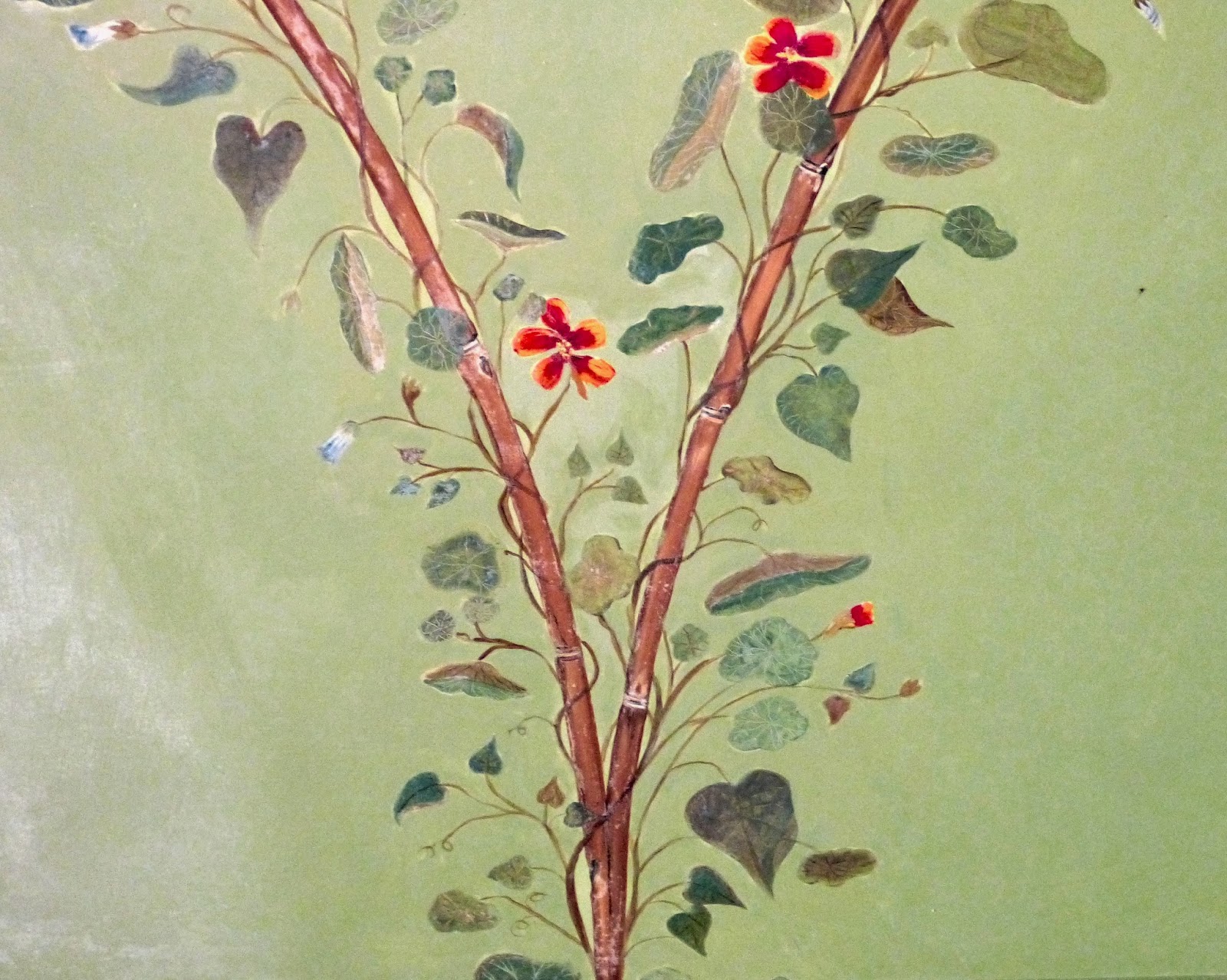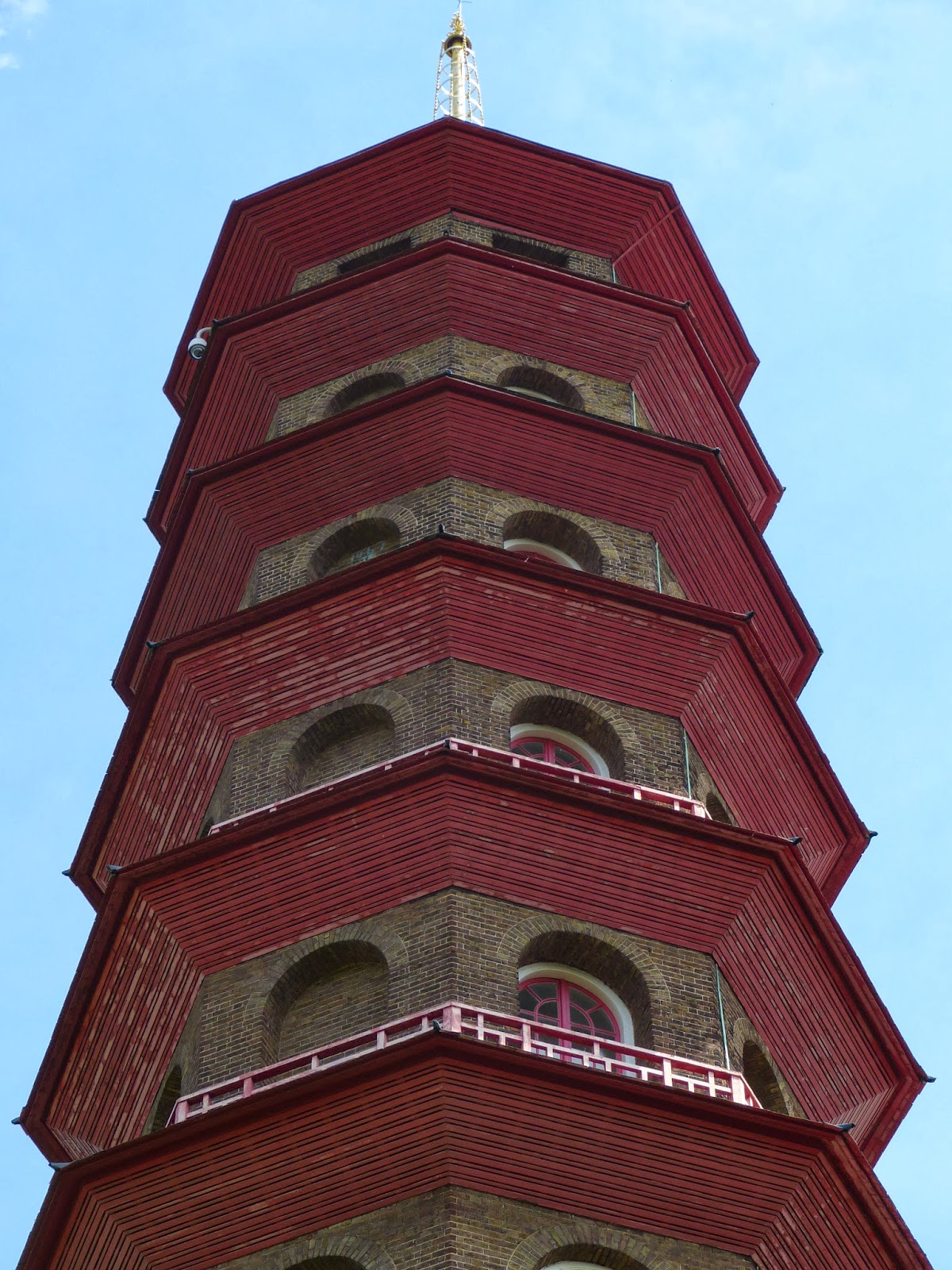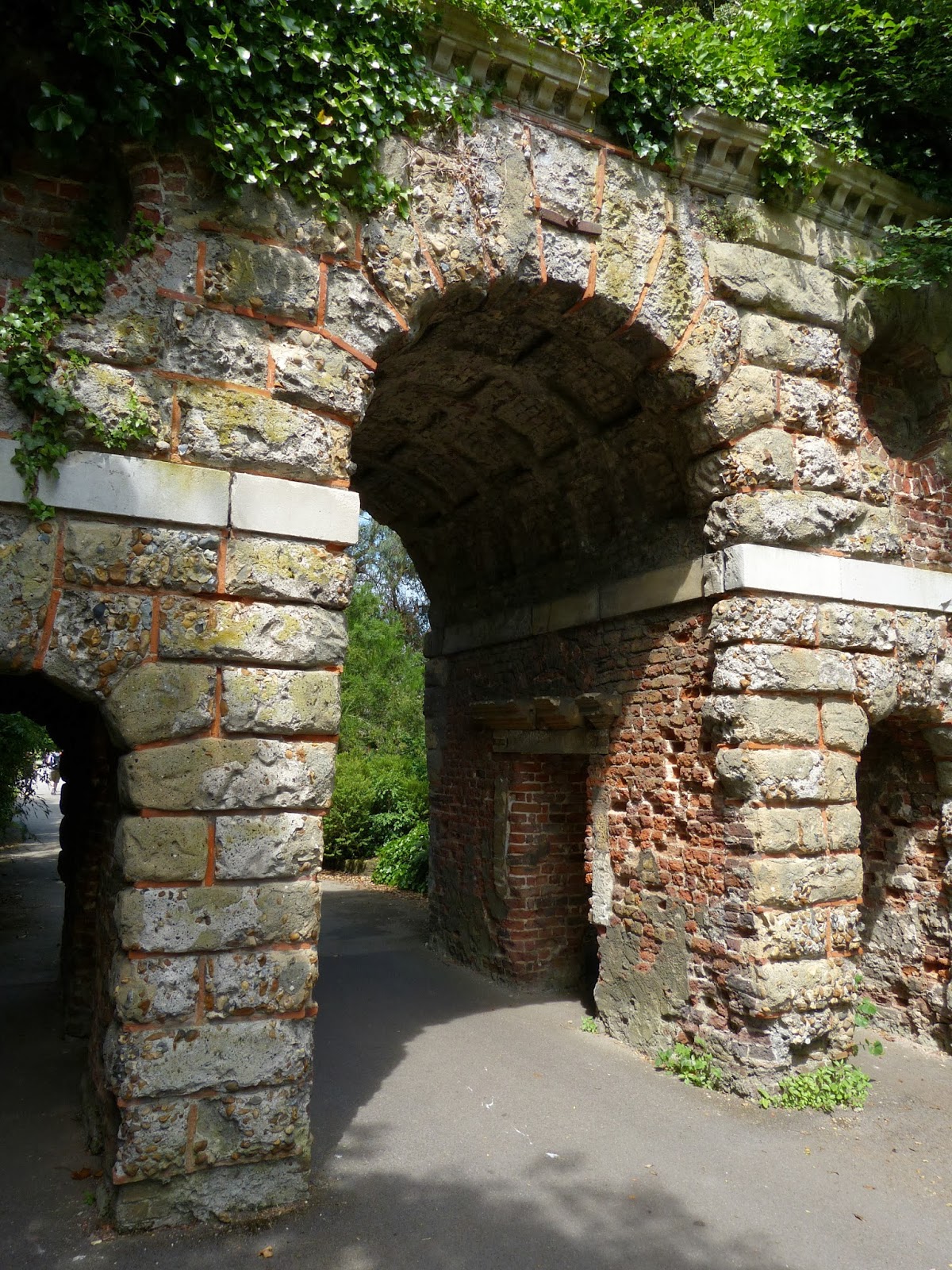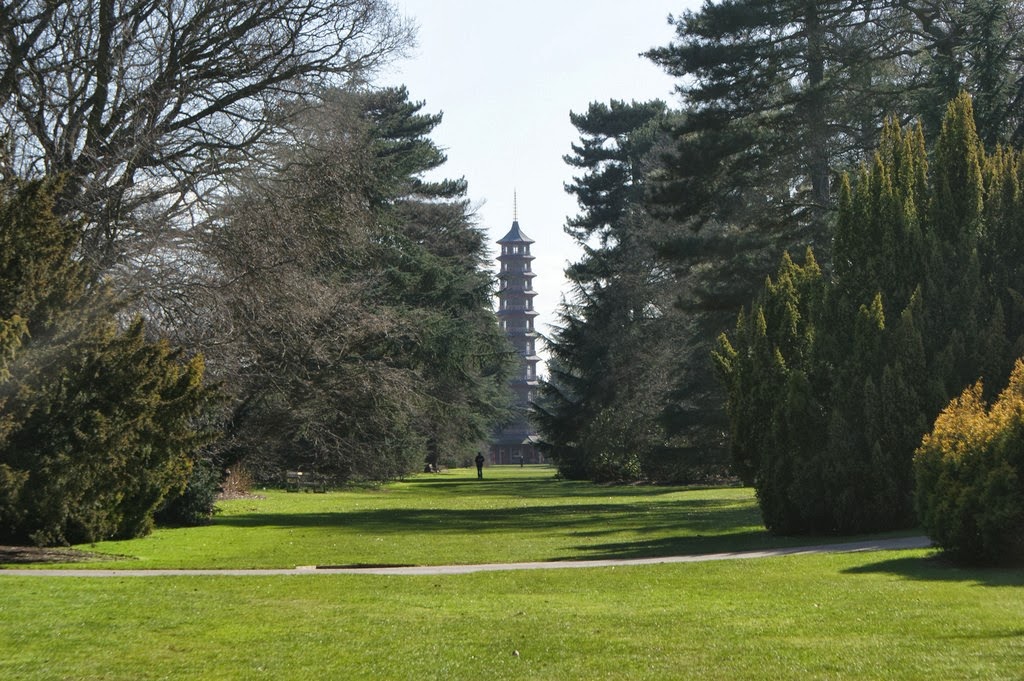The Royal Botanic Gardens, Kew, often referred to as Kew Gardens, are in Kew in the London Borough of Richmond upon Thames. Kew Palace is situated within the gardens.
History
Amongst the Georgian royals there were a number of keen gardeners: Queen Caroline; her son Prince Frederick and his wife Princess Augusta; and their son George III’s wife, Queen Charlotte.
Queen Caroline developed the gardens around Richmond Lodge whilst Prince Frederick developed the gardens at Kew. After Prince Frederick’s death, Princess Augusta continued to follow her husband’s plans for the gardens. In 1759, she employed William Aiton to develop her botanical garden and this is considered to be the foundation of the Royal Botanic Gardens, Kew.
History
Amongst the Georgian royals there were a number of keen gardeners: Queen Caroline; her son Prince Frederick and his wife Princess Augusta; and their son George III’s wife, Queen Charlotte.
Queen Caroline developed the gardens around Richmond Lodge whilst Prince Frederick developed the gardens at Kew. After Prince Frederick’s death, Princess Augusta continued to follow her husband’s plans for the gardens. In 1759, she employed William Aiton to develop her botanical garden and this is considered to be the foundation of the Royal Botanic Gardens, Kew.
 |
| Bluebells in front of Kew Palace (2013) |
The Royal Botanic Gardens at Kew now include both of these royal estates – Richmond GardensGeorge III and Kew Gardens, separated by Love Lane. They were combined into one estate by George III who inherited Richmond from his grandfather in 1760 and Kew Gardens from his mother in 1772.
The botanic gardens were given to the state in 1841 and further land was donated in subsequent years. The gardens now cover over 300 acres of land and serve as both a scientific institution and a public park.
Georgian connection
Princess Caroline
The future George II and Queen Caroline started using Richmond Lodge as their summer residence in 1719. The gardens included a number of exotic plants and trees including orange trees, pomegranates, nut trees, myrtles and bay trees.
The botanic gardens were given to the state in 1841 and further land was donated in subsequent years. The gardens now cover over 300 acres of land and serve as both a scientific institution and a public park.
Georgian connection
Princess Caroline
The future George II and Queen Caroline started using Richmond Lodge as their summer residence in 1719. The gardens included a number of exotic plants and trees including orange trees, pomegranates, nut trees, myrtles and bay trees.
Caroline consulted Alexander Pope and commissioned William Kent to build various buildings in the grounds including a new pavilion at Richmond, a Gothic Hermitage and Merlin’s Cave.
Prince Frederick and Princess Augusta
George II’s son Frederick and his wife Augusta lived a short distance away at Kew. Frederick had a passion for botany and with the help of Lord Bute, he started to collect exotic plants and trees.
After Frederick’s death in 1751, Augusta continued to develop her husband’s plant collection, using about 9 acres of the Kew estate as a botanical garden.
Augusta continued to accept Lord Bute’s support and appointed William Aiton as her head gardener. She commissioned Sir William Chambers to design various buildings around the estate including the Pagoda, the Ruined Arch and the Orangery.
Augusta continued to accept Lord Bute’s support and appointed William Aiton as her head gardener. She commissioned Sir William Chambers to design various buildings around the estate including the Pagoda, the Ruined Arch and the Orangery.
George III and Queen Charlotte used Richmond Lodge and then the White House at Kew as their country retreat. Queen Charlotte shared her mother-in-law’s love of botany and continued to develop the gardens. Sir Joseph Banks often visited and brought a collection of over 1000 new seeds and plants from the South Seas.
Sir Joseph was the unofficial director of Kew and ensured that the study of plants at Kew was done scientifically. Aiton started to create a catalogue of all the plants being introduced, the Hortus Kewensis (1789).
Franz Bauer became the resident artist at Kew and taught botanical drawing to the princesses.
Sir Joseph was the unofficial director of Kew and ensured that the study of plants at Kew was done scientifically. Aiton started to create a catalogue of all the plants being introduced, the Hortus Kewensis (1789).
Franz Bauer became the resident artist at Kew and taught botanical drawing to the princesses.
 |
| Part of the ceiling detail from the tea room in Queen Charlotte's cottage painted by Princess Elizabeth (2014) |
Highlights to look out for in the gardens include:
• Queen Charlotte’s Cottage
 |
| Queen Charlotte's Cottage, Kew (2014) |
 |
| The Pagoda, Kew Gardens (2014) |
 |
| The Ruined Arch, Kew Gardens (2014) |
 |
| The Orangery, Kew Gardens (2014) |
Rachel Knowles writes clean/Christian Regency era romance and historical non-fiction. She has been sharing her research on this blog since 2011. Rachel lives in the beautiful Georgian seaside town of Weymouth, Dorset, on the south coast of England, with her husband, Andrew.
Find out more about Rachel's books and sign up for her newsletter here.If you have enjoyed this blog and want to encourage me and help me to keep making my research freely available, please buy me a virtual cup of coffee by clicking the button below.
Last visited: June 2013.
If you enjoyed this article, you might also like my guides to Queen Charlotte's Cottage and Kew Palace.
Sources used include:
Groom, Susanne and Prosser, Lee, Kew Palace, the official illustrated history (2006)
Kew Gardens website
Photographs © RegencyHistory.net




Merlin's Cave?
ReplyDeleteFrom what I have read, it appears that the Hermitage and Merlin's Cave were demolished in about 1770 when Capability Brown remodelled the gardens.
Delete